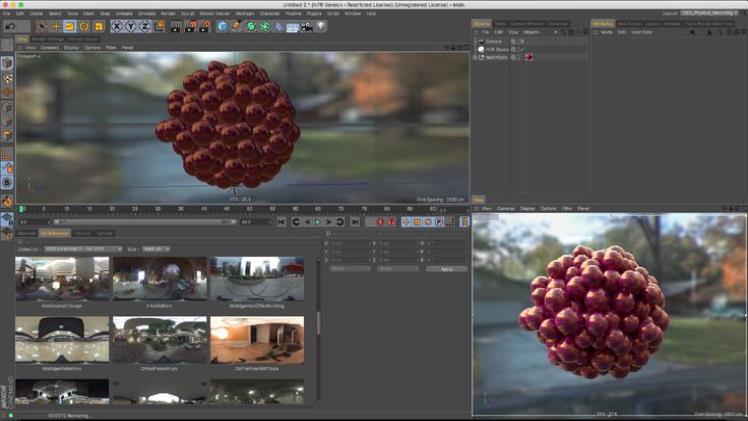Introduction
Rendering a model is well-established as the gold standard when it comes to providing polished designs. Thanks to this process, it’s possible to showcase the scene from various angles adding finishing touches and bringing everything to life.
But before pressing ahead with adjustments to textures, lighting and other elements, designers have a couple of options to ponder first. And one of those is the use of interactive or regular rendering.
What is interactive rendering?
Interactive rendering is the fastest way to see how rendered changes are reflected in a design. Various tweaks can be applied to surfaces to achieve photorealistic results and each one has its benefits. Adding light to surfaces along with colours, textures and animations will ultimately improve the final product, but each change is a single adjustment and needs to be processed separately. There’s a lot of pressure on the CPU as it powers through these user instructions, and this may cause considerable lag on less-able machines. However, there is an option to see your changes applied almost instantly, and this is where interacting rendering comes into the equation.
Differences between regular and interactive rendering
There is one obvious difference between interactive and regular rendering. As we have seen, it is possible to make changes to a design and instantly see how these changes affect the image. Interactive rendering makes this possible and differs from regular rendering in its instant release of updated images.
To see all of the changes in one go, you can simply apply them at the same time and see the finished product via regular rendering. There are reasons why you may wish to choose one method over the other, so let’s take a look at a few of the differences that exist between the two.
Overall quality
To the untrained eye, there may not appear to be much difference between an instantly updated image that interactive rendering creates and applying all changes at the same time. But there will be some loss of quality in the long run. It is always advisable to use regular rendering to produce the designs that will be seen by or presented to the client.
Render settings
Within the software design program, different settings will be applied to achieve interactive or regular rendering results. To make interactive image updates as fast as possible, the program needs to go about its work in a slightly different way. However, these settings won’t have a huge effect on the image quality so you will still see fantastic results as they instantly appear. Although as we said before, bear in mind that the final image using regular rendering will be slightly better in the long run.
Overall speed
Even though interactive rendering is producing images as soon as any changes are applied, they don’t make full use of the CPUs power. So if it isn’t necessary to constantly review a design as any rendering elements are adjusted, you’ll find that using regular rendering will produce a more time-effective response overall. But where there is a will, there is a way. With most design software, it’s possible to enter the system settings within the rendering program and override the number of threads that are in use during this process.
How to use interactive rendering
Getting to grips with the interactive rendering option for your software will take time. Every suite of tools goes about achieving these results in a slightly different way. And ultimately, it will depend on the product that you choose to work with.
Some programs such as V-ray, for example, make it extremely simple to start the interactive option. This rendering engine that is used for SketchUp has its own interactive button in the main asset editor.
Interactive settings
As with the aforementioned design tools, there will be various settings available for the designer to select from. But there are other considerations here such as the type of graphics card that the computer has installed. Not all settings will be available with a different hardware setup; you can only work with what you have.
In general, you will be able to adjust the level of interactivity to increase image creation times. In addition, it’s usually possible to specify the width and height of a rendered image as it is produced in the render output area. You may also be able to set the proportional relationship between the width and height of the rendering as well.
Summary
Both interactive and regular rendering have their place in the design process. Many designers will choose to use the interactive option when working with specific objects that are to be applied to an overall model. Rather than constantly updating a complete scene, it can be more effective to work with problematic areas individually and keep an eye on them as you make any necessary changes. The overall quality of rendered images will certainly benefit from regular rendering making this the preferred choice for producing the final rendered image.





